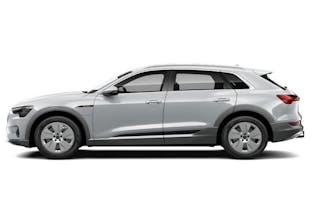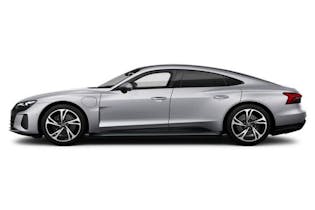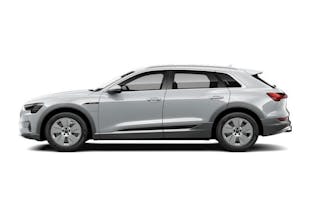Toyota Highlander Limited Hybrid car review
One week living with the Toyota Highlander Limited Hybrid – there can be only one!

The Highlander is a seven-seat SUV that is a popular option for families who need a bit of space in a car and the capability of carrying extra bodies around.
First appearing in 2000, the Highlander has recently celebrated its 21st birthday. The latest variants have ditched the big V6 engines that the model was mainly known for and now only comes in hybrid form. This is happening globally to keep in line with governments cracking down on vehicle emissions.

First impressions
I went from driving a Toyota RAV4 straight into the Highlander, so I sized them up side by side. Despite the name, the Highlander doesn’t appear to be any higher off the ground to climb into, but it’s definitely longer and wider.
That extra size gets you a bigger boot. The boot contains two seats that fold flat to the floor, meaning it can seat seven. The second row of seats can slide forward to even out legroom for those in the back.
There’s plenty of space up front for the driver and front-seat passenger as it builds on the already spacious platform of the RAV4. It feels very nice inside and I really liked the cabin with the seats covered in synthetic leather. I especially liked the padded door liner; it was very comfortable because being a taller driver, my knee tends to rest against the door.
The Highlander has a 2.5L engine, which is the same size as the one in the RAV4. But it’s been played with to give it more power and now requires 95-octane petrol rather than 91. I’m not sure if Toyota has done something to the exhaust too, but it definitely sounded more rumbly and powerful.
The Limited is the middle model in the range and costs $70,290. You can get a Clean Car Discount but it’s not very big, at $1304. The base-model GXL is $66,290 while the range topper is the $78,290 Limited ZR. After looking long and hard at the specs, the $70k Limited seems like the sweet spot in the range and I personally can’t see much reason to pay the extra $8000 for the ZR.
How we test
Each vehicle we trial gets the same treatment: a week of commuting in rush hour from Lower Hutt to Consumer HQ (a round trip of 28km); a run to the supermarket; and a drive over the Remutaka Hill and back, to see how it goes on a longer weekend trip. In total this makes for about 270km of motoring.
We record fuel use (both actual and on the trip computer) and measure electricity usage where appropriate, with PHEVs and EVs. The actual fuel use is measured by filling the tank to the brim at the start of the trial and then again at the end, and comparing numbers. It’s an inexact science that we use as a check, but it’s still a real-world appraisal – just one you take with a grain of salt.
Commuting
This does feel like a big, commanding vehicle on the road, which isn’t a bad thing. The trip computer gives surprisingly good returns from a slow crawl to work – I even got a fuel economy on one trip of 3.9L/100km (against the claimed 6.2L/100km). It has the features you want in adaptive cruise control and lane-keep assist to make the driving experience less taxing.
Supermarket trip

You certainly notice the extra width when manoeuvring around and into parks. It does have front parking sensors to make sure you don’t scrape against anything when nosing into places – or at least warn you just before you do it!
Since it’s big and it wasn’t my car, I happily parked it at the far end of the carpark, away from everyone else to protect it from dings (and from other people). I’d do that too, if I owned it.
The boot doesn’t feel like it can fit a weeks’ worth of shopping; it feels like it could fit several months’ worth instead.
Longer journey
This car feels like it’s born for the highway, and it was a very comfortable cruiser. It has soft suspension so it soaks up bumps, but it does mean it rolls more than a RAV4 when going round corners. It’s not designed to be a racy SUV anyway, so there’s no expectation that it would handle in a sporty fashion.
It does, however, have more than enough power for overtaking. It seems to think about it for a split second and then sends both the petrol engine and electric motor to work together, picking up speed quite quickly.
There’s plenty of space for a family on a longer trip. The boot is massive if you don’t have the third row of seats up. This makes it great for a holiday as you can take all sorts of bulky items.
I even noticed that it has extra air vents for the air con just above the second row of doors for the people in the rear seats. That sort of thing can make a world of difference in the back where the road trip fug can really build up after a few hours.
Final thoughts

If you forced me to buy this car, I wouldn’t complain (though I can’t afford it). The Highlander is a really nice vehicle that returned good fuel economy, despite its size. Mild hybrids work well in rush hour so you don’t feel too guilty about polluting the planet when you drive to work in this, despite it being a large SUV.
I enjoyed the spacious interior and pleasant setting. You definitely know you’re driving a big car – it feels like one in everything you do. If it’s your first foray into something this size, it can feel a bit intimidating when you get behind the wheel. But you’ll soon get used to it, so you’ll neither burn out nor fade away.
Toyota claims 6.2L/100km for the Highlander Limited. The trip computer gave us a remarkably similar readout of 6.3L/100km. Our actual fuel usage suggested 6.6L/100km. That’s pretty close to the claims in real-world conditions.
The vehicle was kindly lent to us by Toyota NZ.
We've tested 95 electric and hybrid cars.
Find the right one for you.
Audi

Audi

Audi

Member comments
Get access to comment